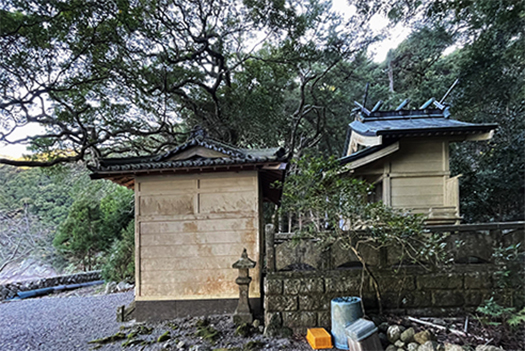
ことしは新年早々、能登半島大地震とさらに、その災害救助にあたっていた海上保安庁とJAL機がまさか、羽田空港滑走路上での衝突事故。JAL機の乗員乗客全員は一部ケガ人も出たけれど無事救出。一方、大きな使命感のもと大地震と戦っていた尊い人命が失われてしまった。なんともやるせなく、つらい。ご冥福をお祈りします。
昨年中から2024年は世界にとって分水嶺的な事象が集中することが指摘されてきましたが、どうも騒然とした状況は、日本で象徴的に発生してしまった。なんとか社会平穏を祈念します。
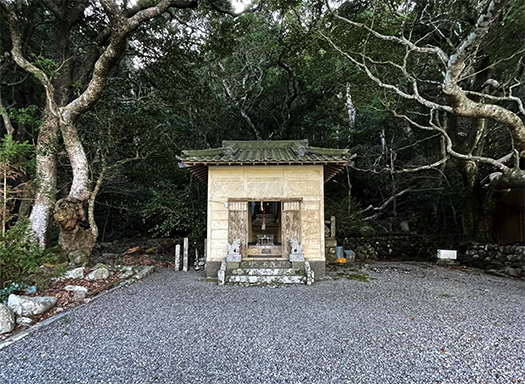
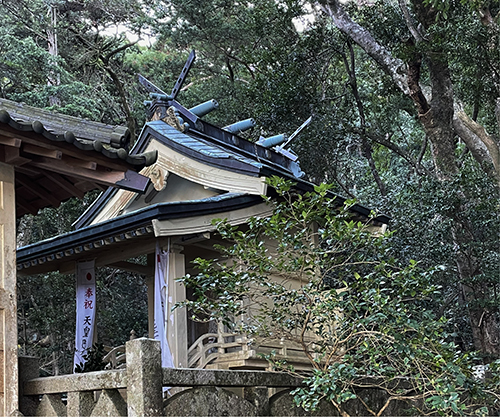
さて昨日元旦から開始したシリーズ2回目。わたしのブログでは千葉県の日本歴史民俗博物館の古代の展示が大革新されたことに感動して「列島37,000年史」シリーズとして自分なりに整理整頓させてもらった。歴史や考古の最新研究の成果を一般に教示いただく博物館・歴史館の学究のみなさんの労に心から感謝したい。
で、考古と歴史の隙間には日本の場合、古事記・日本書紀の世界が広がっている。神武東征の記紀伝承の世界でもこの熊野地域のさまざまなスポットは強く心を捉えられる。
周辺を走る国道311号線の道路脇にある「駐車場」から1.9kmの山道を踏破した先にある神武天皇の東征軍の目印とされる特異な自然景観・楯ヶ崎へのほぼ中間地点にこの阿古師神社はある。
祭神に祀られているのは「三毛入野命」という神武天皇の兄。
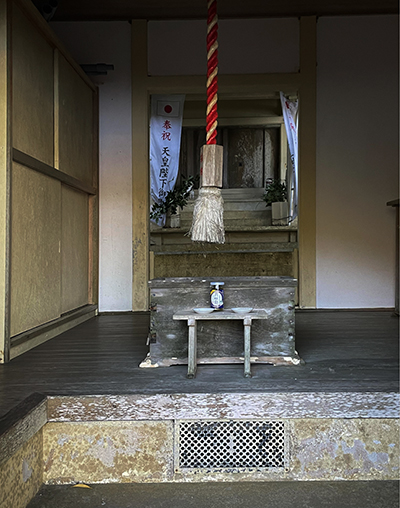
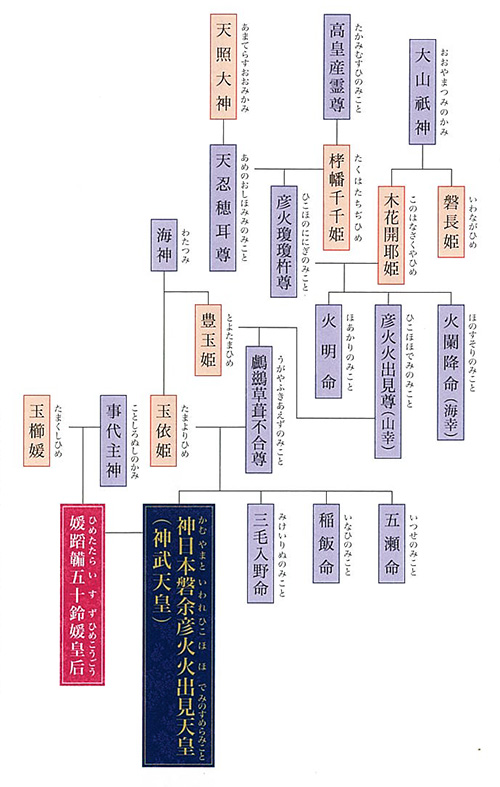
系図は神武天皇を祀る「橿原神宮」発行の「由緒略記」から。神武天皇は4人兄弟の末子とされ、この東征行軍中に3人の兄が亡くなっている。長兄の「五瀬命(いつせのみこと)」は難波方面から大和地方に上陸しようとしたときに地元豪族・長髄彦の攻撃を受けその時の負傷がもとで死亡。その遺言の方針に従って弟たちは紀伊半島を迂回して熊野に上陸を目指す。そのとき「楯ヶ崎」を上陸目印としていたが、大嵐に遭遇して神武帝の2人の兄は相次いで「海に身を投じた」とされる。それによって海が静まり一行は上陸を果たしたと。
この2人の兄を祀ったのがこの阿古師神社とその対岸位置関係にある「室古神社」。こちらの祭神に祀られているのは「稲飯命(いなひのみこと)」。両社の中間を通った奥に「二木島港」があり神武帝上陸の「定説」。
このあたり歴史なのか神話なのか判然とはしないけれど、熊野地方の特異な自然景観、北海道の旭川・層雲峡で知られる「柱状節理」地形が「いかにも」感を抱かせる圧倒的舞台装置。とくに楯ヶ崎は巨大な柱状節理地形が太平洋の荒波のなかに屹立していて、見る者に「さもありなん」と思わせる。歴史文学作家の安部龍太郎さんの熊野紀行文を読むと、氏もまったくゾッコン魅了されている様子が伝わってくる(笑)。
中世の皇統の上皇たちが繰り返し熊野を詣でたこともまた、日本史に強い根拠となって「熊野信仰」に大きく寄与していったこともよく理解できる。
かく言うわたしとしては、北海道人として層雲峡以外でここまで圧倒的な自然景観を見たことがなかった。
ちょうど中学校の修学旅行の頃のナイーブなこころに刻まれた自然景観と、この南国ではるかな時間を経て再会したみたいな、不思議な「邂逅」感に包まれていたのであります。
English version⬇
Landing in a peculiar natural terrain, Kojiki: The Myth of the Imperial Lineage and a Journey to Kumano – 2
The unique natural topography of Kumano, so to speak, brings a “convincing” sense of the mythological world with its “Jomon” persuasiveness. It is amazing. I am impressed.
The Noto Peninsula Earthquake occurred early this year, and the Japan Coast Guard and a JAL aircraft engaged in disaster relief unexpectedly collided on the runway of Haneda Airport. On the other hand, precious lives were lost who were fighting against the great earthquake with a great sense of mission. It is very sad and painful. I pray for the repose of their souls.
It has been pointed out since last year that the year 2024 will bring a concentration of watershed events for the world, but apparently the tumultuous situation has symbolically occurred in Japan. I pray for social tranquility somehow.
This is the second in a series that began yesterday, New Year’s Day. In my blog, I was moved by the great innovation of the ancient exhibition at the Japan Museum of History and Folklore in Chiba Prefecture, and I have organized it in my own way as the “37,000 Year History of the Archipelago” series. I would like to express my sincere gratitude to all the scholars at the museum and history museum for their hard work in sharing the results of their latest research on history and archaeology with the general public.
In the gap between archaeology and history, in the case of Japan, the world of Kojiki and Nihonshoki is expanding. The various spots in the Kumano area are also strongly associated with the legend of the Kiki legend of the Jimmu expedition to the east.
This Akoshi Shrine is located almost halfway to Tategasaki, a unique natural landscape said to be a landmark of Emperor Jinmu’s eastern expeditionary force, after stepping over a 1.9 km mountain path from the “parking lot” on the side of the National Route 311 road that runs through the area.
The deity enshrined at the shrine is Sankeirino-no-mikoto, the elder brother of Emperor Jinmu.
The genealogy is taken from the “Brief History” issued by the Kashihara Jingu Shrine, which enshrines Emperor Jinmu. Emperor Jinmu is said to have been the youngest of four siblings, and three of his elder brothers died during his march to the east. The eldest brother, Itsuse-no-mikoto, was attacked by a local powerful tribe, the Nagasuhiko, when he was about to land in the Yamato region from the Namba area, and died from injuries sustained during the attack. In accordance with the policy of his last will and testament, his younger brothers made a detour around the Kii Peninsula, aiming to land at Kumano. They had set Tategasaki as their landing point, but encountered a great storm and the two brothers threw themselves into the sea one after the other. This calmed the sea, and the party was able to make landfall.
The two brothers are enshrined at the Akoji Shrine and the Muroko Shrine on the opposite shore. The deity enshrined here is Inahi-no-Mikoto. The “Fugishima Harbor” is located in the middle of the two shrines, and it is said that the Emperor Jinmu landed there.
Although it is not clear whether this area is history or myth, the unique natural landscape of the Kumano region and the “columnar jointed terrain” known in Asahikawa and Sounkyo in Hokkaido provide an overwhelming stage setting that makes one feel “just as it should be”. The Tategasaki area in particular, with its huge columnar-jointed terrain soaring above the rough waves of the Pacific Ocean, makes the viewer think, “That’s just as it should be. Reading the Kumano travelogue of Ryutaro Abe, a writer of historical literature, one can see that he too is utterly fascinated by the area (laugh).
It is also understandable that the repeated pilgrimages to Kumano by the emperors of the imperial lineage in the Middle Ages contributed greatly to the “Kumano faith” as a strong basis for Japanese history.
As for myself, as a Hokkaido native, I have never seen such overwhelming natural scenery outside of Sounkyo.
I was wrapped in a strange feeling of “encounter” with the natural scenery that was engraved in my naïve mind when I was on a school excursion in junior high school, as if I was reunited with it after a long time in this tropical country.
Posted on 1月 3rd, 2024 by 三木 奎吾
Filed under: 日本社会・文化研究







コメントを投稿
「※誹謗中傷や、悪意のある書き込み、営利目的などのコメントを防ぐために、投稿された全てのコメントは一時的に保留されますのでご了承ください。」
You must be logged in to post a comment.